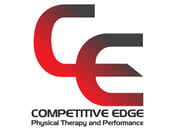Kids can be pretty resilient, but even they can be victim to injuries just like the rest of us! With the prevalence of year round sports and participation at younger and younger ages, this can lead to some overuse injuries that can really hinder their ability to keep playing!
Most people don't think about strength training for youth athletes, but in reality it is very necessary given the increasingly competitive climate in youth sport.
There will be some that argue that kids participating in a variety of sport and play activities will be resistant to injury-and that may be true for some. But as kids age and reach closer to their teen years, the need to develop strength in a constantly developing body becomes crucial.
And the benefits to the child can be huge! They will have improved body control, improved joint and muscle mobility, improved speed and reaction time, reduced injury risk, improved sport performance, and improved self esteem and body image.
What Does Strength Training for Youth Athletes Even Look Like?
I'm glad you asked! Each age will have a unique set of challenges to overcome and areas of focus during the strength training process. Early training, (usually ages 5-10) will focus strictly on bodyweight movements, and mastering control of different positions, movements, and muscle groups. This can be in the form of planks, pushups, air squats, single leg balancing tasks, lunges, reactive and anticipatory balance exercises, jumping, hopping, pullups, shoulder taps, cartwheels, and any variations of these, the list is really endless. The main focus is building a good foundation of body control and awareness. During this stage light weights such as kettlebells or dumbbells can be added, as well as unstable surfaces if the athlete is determined to move well enough to progress!
Typically around the age of 10 (give or take depending on skill level and development) I will start adding more resistance based training. This may still involve light weights to make sure they continue to show good form. The exercises will revolve around some of the foundational movement patterns we encounter in everyday life and sport-squat, lunge, hinge, push, pull. carry. There will be continued development of speed and agility, dynamic balance training, and sport specific strengthening to augment their sport. Depending on what season of sport the child is in, this is usually 1-3 days a week.
Once most kids reach 13-14 they are ready for consistent weightlifting. This will usually look like 3 days a week of full body training, with emphasis placed on the movement patterns listed above. If the child is in season for their sport, this may only be 1-2 days a week. Once kids go through puberty, their body has increased capability to develop strength and muscle. So as long we understand how the developing body heals and recovers, we can implement strength training with excellent results!
Now you may be wondering about the downsides to youth strength training? Some of the risks I have heard from parents and other trainers have mostly been based in fear and the uncertainty of resistance training in youth athletes- stunted growth and damage to bones and growth plates to name a couple. Many years of research has shown that when done safely, there is virtually NO downside to developing strength in youth athletes.
Youth athletes are my favorite to work with! They are often the most motivated and driven people in the gym, and their progress can be so fast since their body is constantly developing.
If you have a child playing sports, and they don't follow any sort of structured exercise routine outside of their normal practice/game schedule, I encourage you to find someone that can help your kid develop and excel in their sport! If we can provide a strong foundation for these kids, we aren't just setting them up for short term success, we are giving them the tools and support for a lifelong pursuit of fitness!
Luckily we work with youth athletes on a daily basis and know exactly what they need. Schedule a free 15 minute phone call with a doctor of physical therapy to get your child a leg up on his/her peers!




Comments